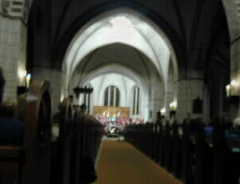October 14, 2001: Baltic Sea (1)
After breakfast, I walked out to the beach just in front of the hotel. This is Baltic Sea. The morning sun casts sunlight on the top of thick cloud and makes it turn pink. This is an impressive landscape of northern seashore.

Seagulls and swans drift on the wave. A swan came up from the water and approached to me. I stretched my hand to say hello. The swan looks curiously at me. Yes, we are now on the beach of Baltic Sea, we came here at last, indeed.
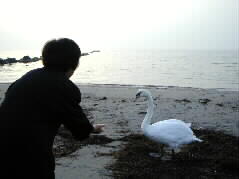
This morning, Klaus and Kaeko took me to a nearby port to buy fish. Some fishing boats are berthed and sell fish to the shoppers. We came close to a boat around which many people gathered. Fishermen cut and slice out fish meat. Most of the fish are Baltic cods. We soon bought one of them. A fisherman skillfully slivered it for us.
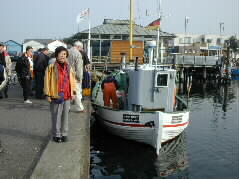
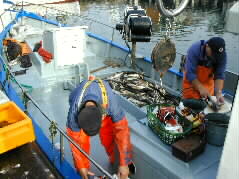
We soon tasted it at Klaus's home. It was very crunchy and tasty. When I hear the word "cod", I simply imagine "boiled cod", but the refreshing taste of this cod was amazing.
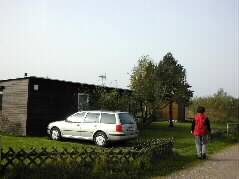
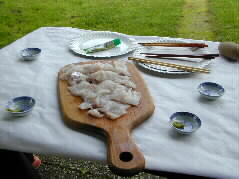
As Klaus names his house as a "Seaside house"; Baltic Sea is just a few steps from his house. White beach stretching afar allows people play bathing and boating in summer. Fehmarnsundebruecke, visible in the distance, connects Grossenbrode on the mainland with Fehmarn Island.
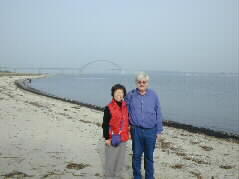
After a while we crossed the bridge and drove up to the top of the Island. Only 20 minutes drive in the flat Island took us to Puttgarden port on the northern tip of the Island.
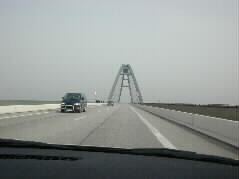
The water distance from Puttgarten to Denmark is just 19 Km. Frequent ferryboat service carry cars and trains. I found a ferryboat arrived at the port. Many trucks and cars came out of the boat (right.) A white building on the left is a shopping center for the shoppers coming from outside of Germany. The number plates on the cars are of Denmark, Norway, Netherlands, and Germany. Many visitors from "abroad" walk out on the pedestrian bridge. The train can be loaded from a berth just next right to this berth.
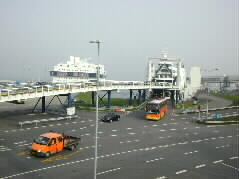
Many foreigners come to Germany to enjoy cheaper shopping in the supermarket shown above. They buy a lot and go back their homelands by the ferryboat. The fare for a roundtrip is, what is surprising, just 5 marks (250 yen) and it takes just 40 minutes to Denmark. I just wanted to visit Denmark.
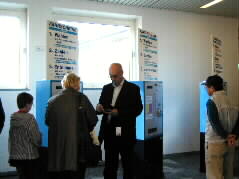
Unfortunately, we didn't visit Denmark this time and headed to Burg, the largest town on the Fehmarn Island. We came across to an October festival. Mouth-watering flavor lured me and I found many sausages roasted on a large pan, more than 1 meter in diameter, heated with charcoal. They look like very tasty.
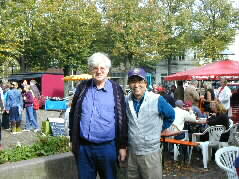
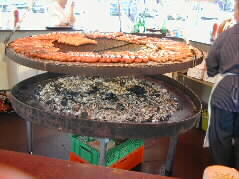
In a large tent, a music band was playing rhythmical music of Bavaria. The sound puts me in a merry mood. The fat belly musicians wear Babarian costumes of half-pants and Tyrolean hats. Their playing energy source comes from beer mugs put close to their feet. Mr. Klaus kindly brought beer mugs for us before I knew.
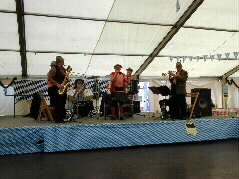
We returned to Klaus's house and enjoyed rice ball party for lunch prepared by Kaeko in the kitchen while we were out. The lunch of warm rice ball and sliced fresh cod meat reminds me of Japanese taste. There is Wasabi, Japanese horseradish, in the kitchen of Klaus who loves Japan very much.
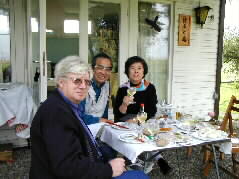
In the afternoon, we four drove out to Kiel, which my husband wanted to visit. On the way to Kiel, we dropped in Laboe town in which German Navy Museum is located. In the garden of the Museum are many memorial stones including a Japanese one that commemorates the present of a gingko tree from Yasukuni Shrine in Japan.
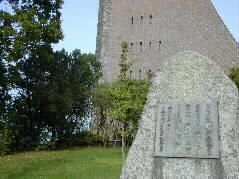
The Memorial Hall enshrines the soul of the victims in WW1 and WW2. I was surprised to find that so many commercial ships were destroyed in the wars. There were many miniatures, pictures, and records on display.
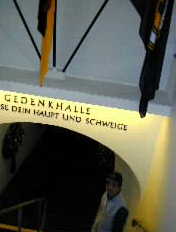
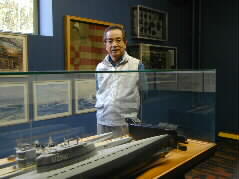
We walked out of the Museum. The round dome on the right is the cover of the funeral chapel. The high Memorial tower allows people to overlook from the top the grand vista of Kiler Foerde.
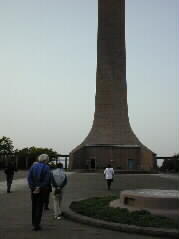
On the beach was a U-boat. We could look through the inside. The boat could hold seven torpedoes. Very small and narrow bedrooms and living spaces means the boat was designed mainly for launching torpedoes, not for crew.
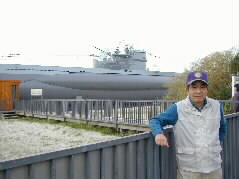
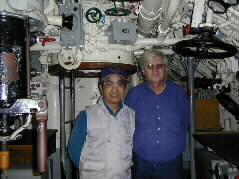
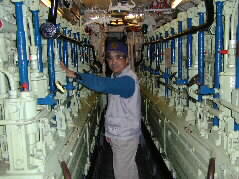
After a short drive, we came up to downtown Kiel at last. My husband has long been sticking to visit the town because it was a port deeply related to old Japanese Navy during WW2 in which Germany and Japan fought together against Allied Forces. My husband had heard the name of Kiel many times in his boyhood from his father. He looked like to be much moved to find himself in the town. Today, the City is famous for its heavy marine traffics between Germany and Northern European countries.
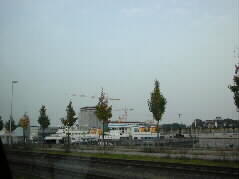
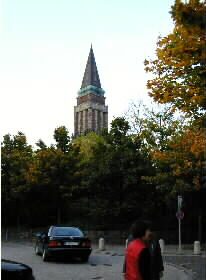
In the evening, we returned back to Burg on Fehmarn Island to listen to a gospel concert. The old church was filled with many audiences and the gospel sound in the church was really moving.
